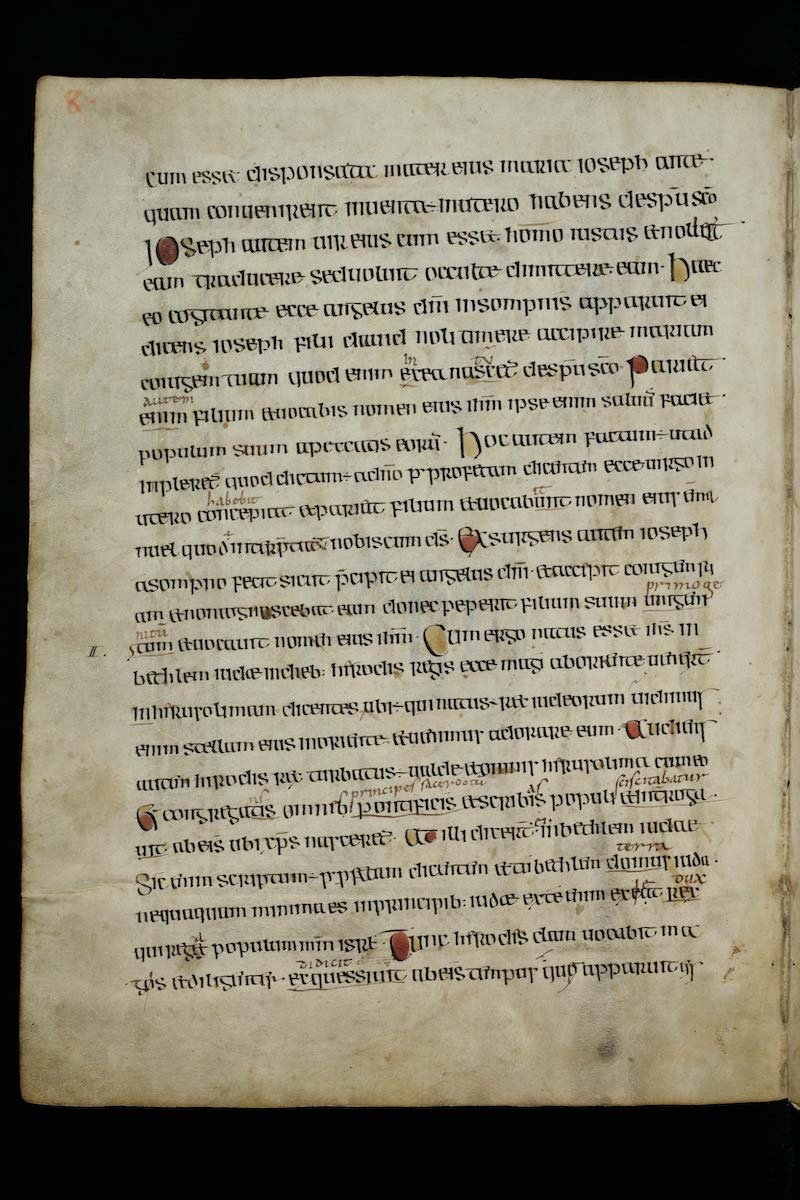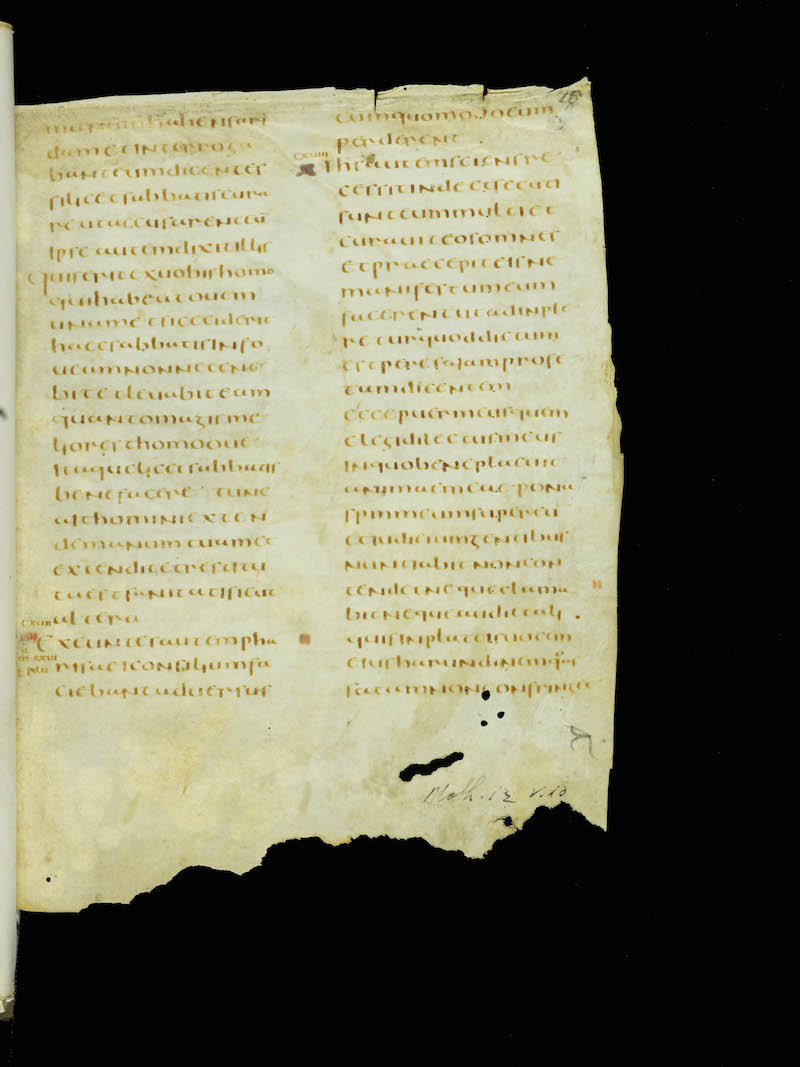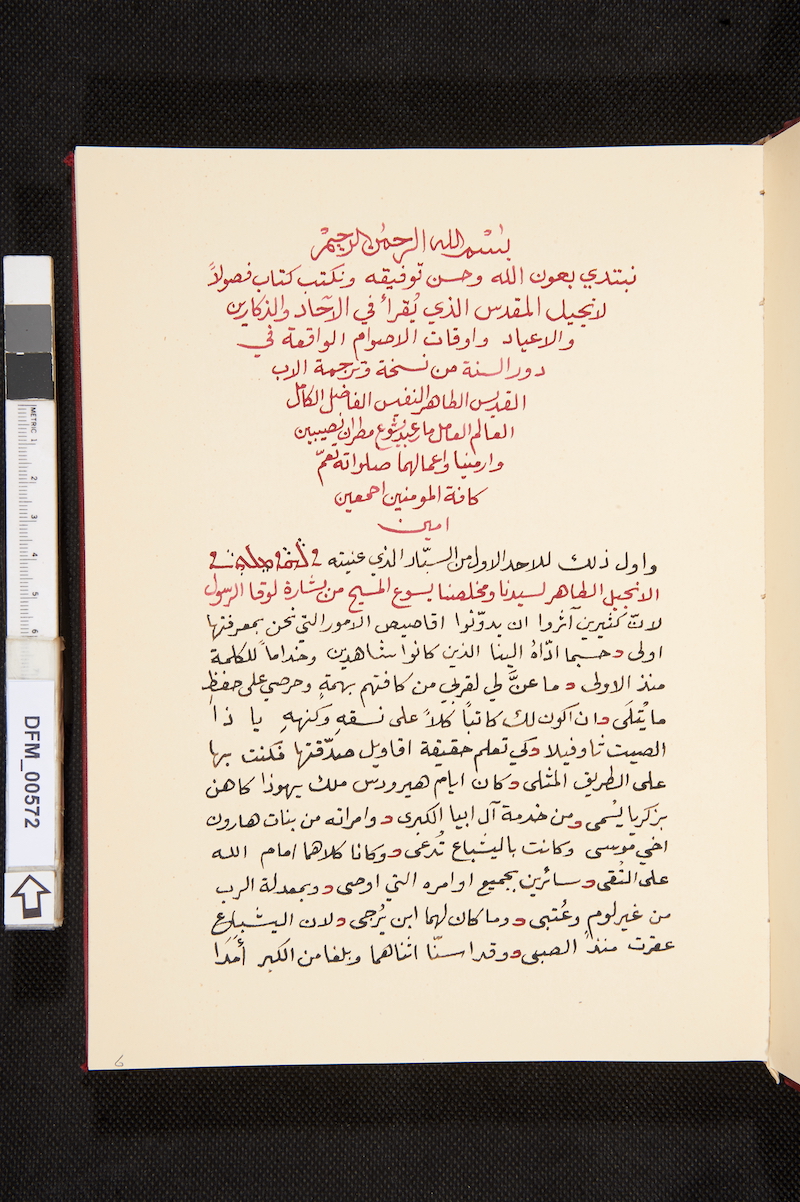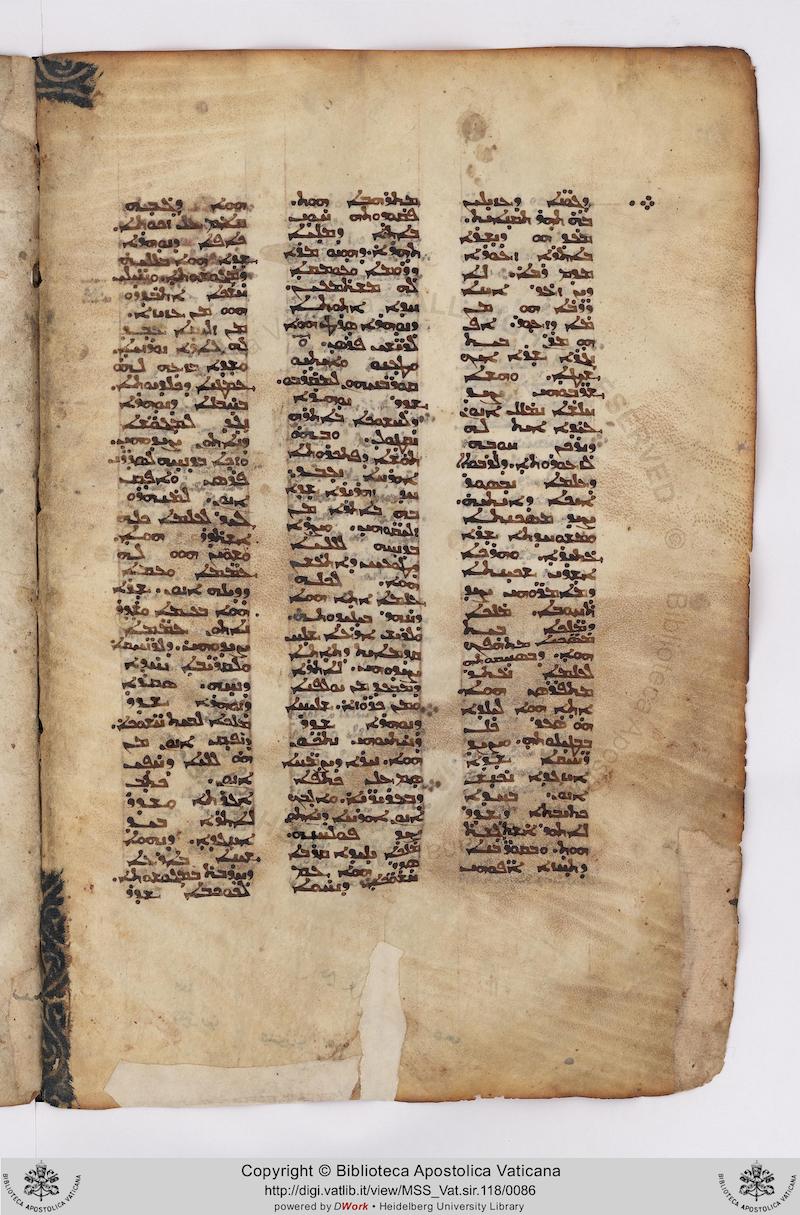
Naskh, 14th Century
-
Title
Bible. Epistles and Acts -
Text
Acts 3:19-4:3 -
Language(s)
Arabic -
Writing System
Arabic -
Script(s)
Naskh -
Country
Turkey -
City
Mardin -
Repository
Chaldean Cathedral -
Shelf Mark
CCM 56 -
Century
14th Century -
Year Range
1300-1400 -
Place Of Origin
Egypt -
Provenance
Formerly Mardin 89; copied at the Monastery of Mercurius in Egypt -
Bibliography
Addai Scher, "Notice sur les manuscrits syriaques et arabes conservés dans la bibliothèque de l'Évéché chaldéen de Mardin," Revue des bibliothèques 18 (1908): 64-95, at 89.
232 leaves (modern pencil foliation in western numerals), on paper. 1 column, 15 lines; binding dimensions 28 x 20 x 8 cm
Acknowledgements: Described by Adam Carter McCollum
Transcription
NB: Transcribed as closely to the manuscript as possible, given limitations of digital typography: vowels are indicated as in the manuscript, as are hamzas. The placement of the vowels and other diacritical marks is not always exact and thus involves some interpretation.
1 وتَاتيمُ اَزمنة الراحه * مِن قُدَّام وَجهِ الرَبِّ * ويَبعث
2 اليكم الذى كانَ مُهَيّا لكم * وهو يسُوع المسِيح الذى الياه ينبغى
3 للسمآءِ ان تقبَل * الى الزمّان الذى يتِمّ فيهِ كلّ شىءٍ * تكلم
4 بهِ اَللّهُِ على اَفواهِ انبيآيهِ القِدّيسين مُنذ الابدِ ⁂ وذلك
5 ان مُوسَى قاَل * ان اللّهَ يُقيم لكُم نبيًّا مِن اخوتكم مثلي * لهُ
6 فاطِيعُوا فى كلما يكلمكم * وكلّ نَفسٍ لا ىقبل ذلك النبىّ *
7 تهلِك تلك النفس من شَعبِهَا ⁂ والانبيآ كلهُم الذِينَ من
8 لَدُن صَمُويل النبيّ * والذين كانوا من بَعدُ قَد نطقوا ونادُوا
9 عَلى هَذِه الايّام * وانتُم هُم ابنآ الانبيآءِ * وابنا الميثاق الذى
10 عهَدهُ الله لاباينا * اد قال لابرهيم * ان بسلِك يتبارك
11 جميع قَبايل الارض * لكم اَقامَهُ اللَّهُ اولًا * فأرسَل ابنهُ اِذ
12 يُبارككم * ان تَرجعُوا وتتُوبُوا من سيئاتكم ⁂ فبينَما همَا
13 يكلمان الشَعب بهذا الكلام * وثبَ عليهم الكهَنةُ والزىادقه
14 وَرُؤسآ الهيكل * اذ هُم حَنِقون عليهم * لتعليمهم الشَقب * وندايهم
15 بالمسِيح على القِيامَةِ من بين الامواتِ ⁂ فالقَوا علىهما الادى
Paleographic Features
In the outer margin are Graeco-Coptic numerals for sections: 30, 31, 32, 33 (although the numeral for the 30s looks much more like an Arabic lām (which also = 30) than the typical Graeco-Coptic sign. These divisions are separated by three rubricated inverted commas (in the transcription marked with ⁂), while subdivisions are marked with a single inverted comma (in the transcription marked *).
Particular letter forms
The script is very clear naskh, and there is almost nothing ambiguous about any of the letter forms. Words are written along a relatively straight line, but there are some cases of a minor rise and fall, as in كلما (l. 6) and صَمُويل (l. 8). The letters are sans serif with horizontal ascenders and descenders. A medium difference of thickness of the pen-stroke is evident in several places where the line curves.
- The teeth of the sīn and šīn are clearly written.
- The loop of fāʾ, qāf, and wāw is very small, and there is usually no white space visible within it.
- As for the final lām, in قال (l. 10) the foot is almost on the baseline, but elsewhere it generally hangs lower.
- Lām-alif is usually in the form known as muḥaqqaqa (e.g. bis l. 9), but one is al-lām alif al-warrāqīya (l. 10).
- The final mīm is musbala.
- The word-final hāʾ (actually for tāʾ marbūṭa) of والزىادقه (l. 13) is a hāʾ maḫṯūfa.
- Word-final yāʾ (muḥaqqaqa) and nūn are notably elongated.
Some of the dots that distinguish certain letters, however, are omitted.
- l. 4: the nūn of القِدّيسين has no dots
- l. 6: the yāʾ of يقبل has no dots
- l. 10: the qāf of قال has no dots
- l. 13: the nūn of والزىادقه has no dot
The tāʾ marbūṭa in ll. 1 and 13 has no dots. Word-final yāʾ never has dots, whether it stands for alif maqṣūra or not.
Hamza, vocalization and other diacritical marks
Hamzat al-qaṭʿ is marked in فأرسَل (l. 11). Word-internal hamza and word-final hamza are often not indicated (but وَرُؤسآ in line 14). What would be a word-final alif + hamza is written here as alif mamdūda. In l. 12, the word سيئاتكم (pl. of سَيِّئَة, with 2mp suffix) is actually written with a single yāʾ shape with a hamza above it and two dots below.
Vowels are marked sporadically, but not infrequently. A different (thinner) pen may have been used for the vowels. As in other manuscripts, relatively unambiguous forms are often marked, while less common forms may not be. Dagger alif is marked nowhere.
The tašdīd is always marked in allāh, and occasionally elsewhere, as in القِدّيسين (l. 4), النبيّ (l. 8), and الايّام (l. 9). Sukūn is not marked.



